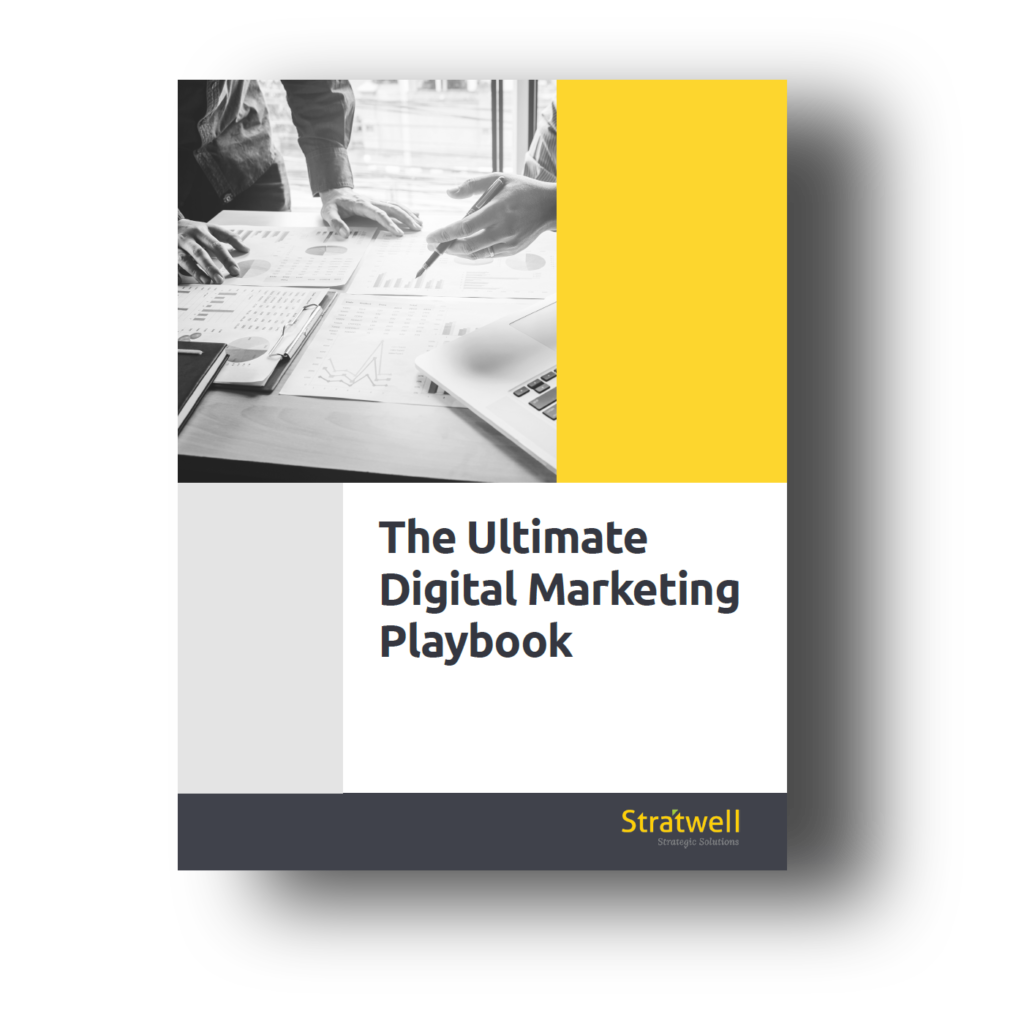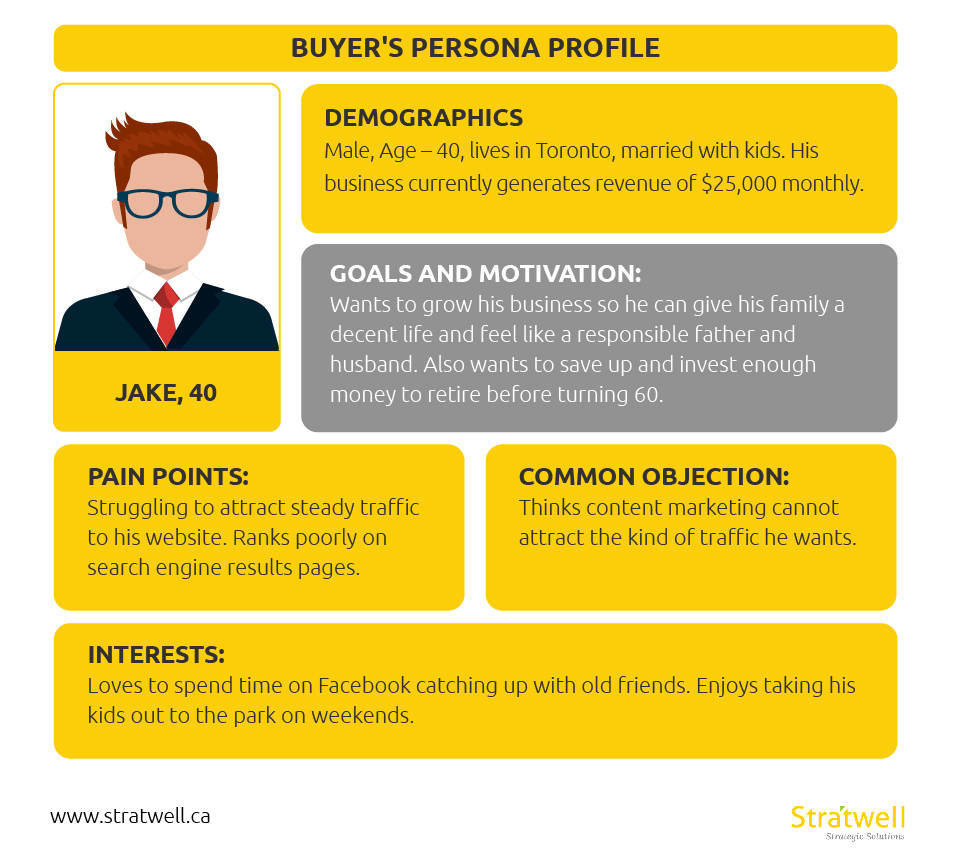Most businesses should have at least an idea of who their target audience is. However, in today’s world, a little understanding of your audience won’t cut it. You’ll need more than that if you wish to continue to grow your business.
This means you should aim to thoroughly understand your ideal customers so you can tailor your operations to suit the preferences of these individuals. This is where the buyer persona comes in.
What is a Buyer Persona?
A buyer persona, or an ideal customer persona, is a detailed description of your ideal customer. It includes a lot more than bits of generic demographics.
With a buyer persona, you are digging deep into the lives of your potential customers and uncovering their interests, pain points, goals, habits, and other peculiar factors. You will arrive at these insights by carrying out thorough research and collecting reliable data.
The idea behind developing a buyer persona is to find as many relevant details as you can about your target audience. This way, you can use these insights to align your business operations to this group’s preferences. For instance, a detailed buyer persona will guide aspects of your business, like your marketing campaigns, product development, and content creation efforts.
It’s not uncommon to have multiple buyer personas. If your product or service appeals to a wide range of people, you’ll need to separate them into groups.
Each segment will have a representative that will help guide your approach to reaching members of that group. That fictional representative will embody the traits of the average member of your audience. That’s a buyer persona.
To learn about the difference between targeted audience and buyer personas, check out our blog post here.
Is a Buyer Persona Really that Big a Deal?
That’s a question worth asking, seeing as we already have so many exotic business buzzwords that hold little meaning. But is this one of them? Absolutely not.
A buyer persona does matter. For one, it offers you clarity and precision when it comes to developing marketing strategies and creating a relevant product or service offering.
Imagine you’ve been asked to pick up a guest you’ve never met from the train station. You weren’t given any information about the guest except that the person would be wearing a white T-shirt.
So you arrive at the train station, and you’re all over the place. You’re asking every person in a white T-shirt if they are the guest speaker at your company’s digital marketing conference. Not only will you wear yourself out, but you may miss your guest entirely, only to later find out that the person boarded a train back home!
But consider a situation where you’ve been given a clear photograph of the speaker. In it, she has on the exact clothes she’d be wearing on that day. Behind the photo, you also have details of precisely where to find her at the train station.
You can move with more clarity, certainty, and precision. And that’s what a detailed buyer persona offers.
Your marketing messages are more explicit, targeted, and more persuasive because you know who you’re talking to and where to find them. You understand what makes them tick and how to grab their attention.
You know what their problems are and the solutions they seek. Armed with such insights, you can maximize the resources at your disposal.
Other benefits of a buyer persona include:
- It can help your sales team to establish a strong rapport with prospects and gain their trust.
- It serves as a guide for business decisions, from website development to content creation, branding to rebranding efforts, etc.
- It improves your chances of offering a great customer experience.
- It provides consistency in marketing and sales messages, which enhances brand recognition.
How to Create a Buyer Persona
A buyer persona can be created with a simple 4-step process:
- Conduct Audience Research
- Find Common Factors and Create Your Personas
- Use Your Buyer Personas to Create Content and Marketing Strategies
- Create New Personas and Update Old Ones
Step 1 – Conduct Audience Research
Here’s where you really learn about the people your business serves. And in the words of Jeff Bezos, you would need an “obsessive, compulsive focus on the customer.”
You’re looking to replace whatever assumptions you’ve made concerning your customers and prospects with firsthand details. Here’s a checklist you can use in gathering the information you need.
Basic Data
Collect necessary information about your audience like:
- Age
- Occupation
- Location
- Interests
- Preferred social channels
- Spending power
- Gender
- Level of education
- Profession
- Marital status
Customer Pain Points
Pain points are the challenges your prospects are facing. They are problems your products or service can solve.
You need to uncover these issues because they will help you communicate your product or service’s value in a compelling way. By discovering the problems they desperately want to solve, you can position your product or service as the perfect solution.
One way to uncover your audience’s pain points is by talking to your current customers. They are in the best position to tell you how your product or service helps them. Here are some of the questions to ask them:
- What convinced you to pay for this product or service?
- If you didn’t have this product or service, what could happen?
- Why do you find this product or service a good fit for you?
- How has our product or service helped you
Customer Motivation
Motivation involves the set of factors that drive your customers to buy your product or service. It’s the answer to the question, “what do people seek to achieve with this product or service?”
While your customers’ motives can be tied to external benefits, you can always trace them back to intrinsic gains. Seth Godin’s explanation in his book “This is Marketing” should help clarify this.
Godin expands on a famous quote by Theodore Levitt: “people don’t want to buy a quarter-inch drill bit. They want a quarter-inch hole.”
But according to Godin, no one wants a hole either. People want to feel good by looking at the shelf they will screw to the wall using the hole.
But it doesn’t end there. They don’t just want to feel good about a shelf. They want to feel great and satisfied by seeing their room organized.
But then, they also want to enjoy having done the work themselves and earn the respect of a spouse or roommate while again feeling safe due to the environment’s serenity. Godin ends by saying, “People don’t want to buy a quarter-inch drill bit. They want to feel safe and respected.”
And that just sums up motivation. There is always a deep-seated internal benefit people seek to gain from products and services.
Yes, the core functionality of the product or service matters, and people consider it. Still, most times, their decision to buy or not is based on the intangible benefits the product or service promises. Find out what these benefits are, and you can craft resonating marketing campaigns and sales pitches.
Methods of Conducting Research
Your respondents could either be customers or prospects in your funnel. But it’s always a good idea to begin with your customers if you have any. They are perfect examples of those you are out to serve, and they are likely going to be more willing to talk to you.
There are several ways you can extract the details you need. Conducting interviews is one avenue.
With customers, depending on the type of business you run, you can ask to jump on a brief phone call or video chat with them. Alternatively, you can send out surveys to customers and prospects through emails and social media polls.
You can also assess the data you’ve gathered from your interactions with prospects and customers across various touch points. For example, take a look at the types of content that have performed well.
You can also structure the contact form fields on your website to request for relevant details from visitors like company size and type, job title, location, etc. Competitor data, social media and other tools like Google Analytics are also excellent sources of information on your target audience.
Step 2 – Find Common Factors and Create Your Personas
Having collected information from your customers or prospects, identify typical details. They are the tools you will use in creating your personas.
Pay attention to every customer data category we’ve looked at, from demographics to pain points and goals. Then find the prevalent patterns and build your personas around them.
Don’t panic if you find different recurring details. It means several groups are represented among your customers and prospects, and you would need different personas for each group. Simply identify people with similar pain points and goals and place them in the same categories.
Once you’ve categorized your respondents based on their similarities, give each group separate labels. These labels can include actual names, age, interests, job titles, goals, and pain points. Do that for every group, and you’ve just created different buyer personas based on research and reliable data.
Here’s an example of what one of your personas could look like: say you offer digital marketing and SEO services to businesses. One of the personas you’ve identified is Jake, a small business owner with a modest marketing budget.
- Name: Jake
- Demographics: Male, Age – 40, lives in Toronto, married with kids. His business currently generates revenue of $25,000 monthly.
- Goals and motivation: Wants to grow his business so he can give his family a decent life and feel like a responsible father and husband. Also wants to save up and invest enough money to retire before turning 60.
- Pain points: struggling to attract steady traffic to his website. Ranks poorly on search engine results pages.
- Biggest fears: Having to close up shop due to little sales. Not being able to send his kids to college.
- Common objection: Thinks content marketing cannot attract the kind of traffic he wants.
- Interests: loves to spend time on Facebook catching up with old friends. Enjoys taking his kids out to the park on weekends.
Step 3 – Use Your Buyer Personas to Create Content and Marketing Strategies
This is the point where you use the personas you’ve developed to make better business decisions and build structures that will better serve your customers and convert prospects.
In creating content and reaching out to your audience, assess each persona’s relevant details. Such details will include their pain points and objections that you can use to craft content they will find valuable. You can also use the information on where these people hang out to identify your content distribution channels.
Apart from content marketing, use your buyer personas to tailor your ads and select your marketing channels. In fact, virtually every operation that involves your audience will have to be structured using the buyer personas as a guide. Your offerings will be tailored to your persona’s preferences, and your sales reps can use the personas to craft relevant pitches and build relationships with prospects.
Check out our blog posts to learn about how to create a comprehensive content strategy by clicking here, and on how to map our your buyer’s journey map by clicking here.
Step 4 – Create New Personas and Update Old Ones
When you choose to draw up your buyer persona, you may focus on one market segment. But if you wish to extend your reach and serve more people, there are two ways to do that.
You can either niche down within your selected market segment or explore a different section altogether. If you’ve been catering to small businesses, you can now opt to reach small companies in a specific industry or create a buyer persona for larger businesses.
Regardless of whether you elect to extend your reach or not, you need to keep your hand on your current market’s pulse. Keep taking feedback from customers and paying attention to changes in the market.
The introduction of new technology, for example, can cause a shift in the objections a market segment has towards paying for your service or product. You would need to take that shift into account to create potent marketing messages.
Conclusion
Building a relevant buyer persona takes real effort. You need to commit to understanding your prospects and customers and being a part of their lives.
Perhaps you think you already know enough about these people and so you don’t have to sweat it. Here’s a quick test: who is your ideal customer?
If your answers are vague and superficial, then you don’t know enough about your target audience. You should get busy.
What is your experience with buyer persona? Please feel free to share your thoughts in the comment section below.
Enjoy this article? Subscribe to get similar articles delivered to your inbox and don’t forget to share it with your friends.
Other Related Blog Posts:
Alan Lo, Managing Partner of Stratwell Strategic Solutions, brings a decade of entrepreneurial and business development experience. Early in his career he was instrumental in building out the distribution channels of a real estate investment firm with over $2 billion in AUM. He has then founded an investment company in 2014 which he successfully exited in 2019.














10 Comments
Great post. Thanks for sharing!
Thanks Victor!
This information is very useful. Thank you for posting this!
Thank you Cara, appreciate the feedback!
Awesome post, I have referenced this post in my latest blog. Keep up the great work!
Thank you Matthew, appreciate the note!
Great article. Thanks!
Thanks William!
Very useful information. Thanks for sharing.
Thank you Remington!